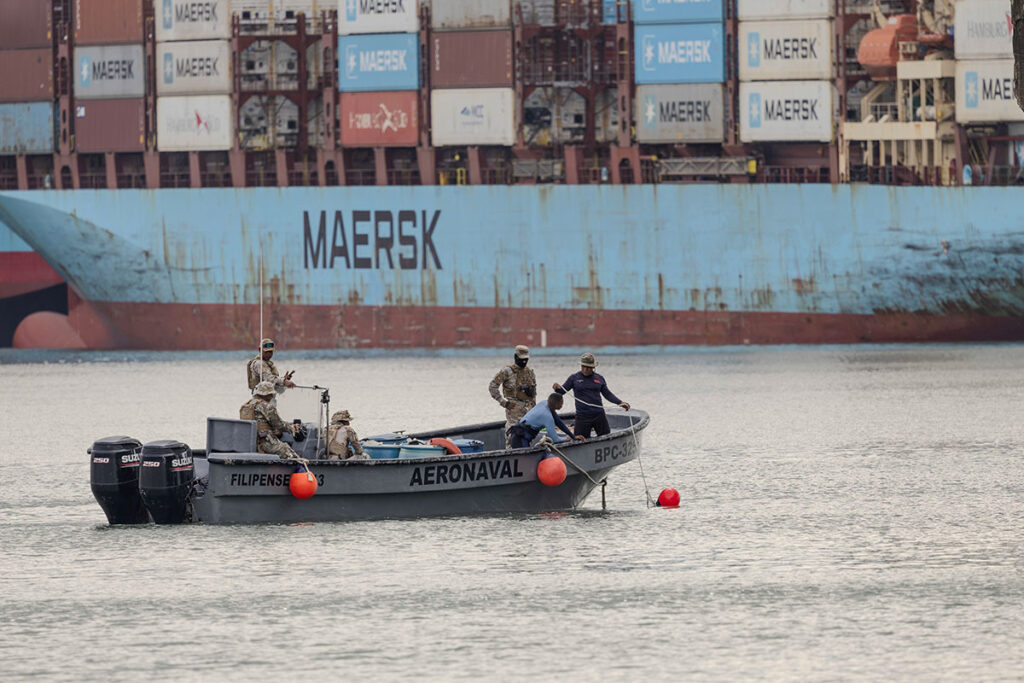In an important international collaboration, U.S. Navy explosive ordnance disposal (EOD) technicians from Explosive Ordnance Disposal Mobile Unit 2 (EODMU-2) recently completed a joint training initiative with Panamanian EOD forces to bolster security and safety around one of the world’s most critical maritime corridors—the Panama Canal.
This operation took place during PANAMAX 25, a premier multinational defense exercise that took place from July 6 to August 9, 2025. Sponsored by U.S. Southern Command (SOUTHCOM), PANAMAX is designed to safeguard the Panama Canal, a strategic chokepoint through which approximately 5% of global trade flows. This year’s exercise emphasized regional security cooperation, joint planning, and integrated response capabilities.
The collaborative training brought together personnel from the Panamanian National Police (PNP), the National Aeronaval Service of Panama (SENAN), and the U.S. Navy. Activities included underwater demolition, improvised explosive device (IED) identification, limpet mine response operations, and chemical, biological, radiological, and nuclear (CBRN) threat training. These drills were supported by the Defense Threat Reduction Agency (DTRA), which facilitated cross-functional CBRNE expertise sharing.
“As EOD technicians, we are critical enablers of freedom of movement across all domains,” said Lt. Daniel Long of EODMU-2. “Our training with Panamanian counterparts is about strengthening partnerships and enhancing regional resilience.”
The effort was led by EODMU-2, part of the Navy Expeditionary Combat Command under Explosive Ordnance Disposal Group 2 (EODGRU-2), headquartered in Norfolk, Virginia. Their mission—refined through decades of operational experience—includes counter-IED operations, underwater ordnance disposal, and threat mitigation for naval and civilian infrastructure.
Strengthening Regional and Global Security
The Panama Canal is not only a conduit for commerce but also a potential target for asymmetric threats including terrorism, sabotage, and trafficking. By improving the capabilities of Panamanian EOD units, the U.S. and its partners aim to create a more secure and resilient operating environment.
“PANAMAX is an opportunity to train EOD technicians from Panama in all aspects of EOD, furthering their expertise and effectiveness,” said Chief EOD Technician Joel Franczak. “Our goal is to provide tactics and procedures that enhance their force’s ability to address a wide range of threats. Interoperability remains a key pillar of our mission.”
These joint exercises enhance not only operational readiness but also strategic deterrence. Through shared doctrine, common procedures, and synchronized planning, U.S. and Panamanian forces are better equipped to respond to emerging threats in a volatile security environment.
Why This Matters for Public Safety and National Interest
While the intricacies of underwater demolition and limpet mine recovery may seem remote to the general public, their implications are profound. The safe and secure operation of the Panama Canal ensures uninterrupted flow of goods, energy supplies, and food imports that impact daily life around the globe. A disruption—even a temporary one—could have cascading effects on supply chains, economic stability, and geopolitical tension.
Moreover, international partnerships like this enhance global counterterrorism and counterproliferation efforts, helping to prevent dangerous materials or technologies from falling into the wrong hands. Protecting maritime trade routes is not just a military priority—it’s a matter of economic security and public safety.
A Model for Multinational Cooperation
The success of PANAMAX 25 showcases how joint training and interoperability are essential components of modern defense. U.S. Navy EOD forces—unique in their capacity to operate underwater and handle the full spectrum of explosive threats—play a crucial role in this ecosystem. Their involvement underscores the importance of specialized capabilities in protecting global infrastructure and ensuring operational freedom.
As regional threats continue to evolve, so too must the alliances and strategies that confront them. Exercises like PANAMAX 25 are more than rehearsals—they are real-world investments in security, readiness, and resilience.
Sources & Further Reading:
- U.S. Southern Command: US, Panamanian Explosive Ordnance Disposal Technicians Enhance Panama Canal Safety
- U.S. Navy Expeditionary Combat Command: EOD Forces Overview
- CSIS: Panama: From Zoned Out to Strategic Opportunity
- Forbes: Why The Panama Canal Is At The Center Of A U.S.-China Power Struggle


